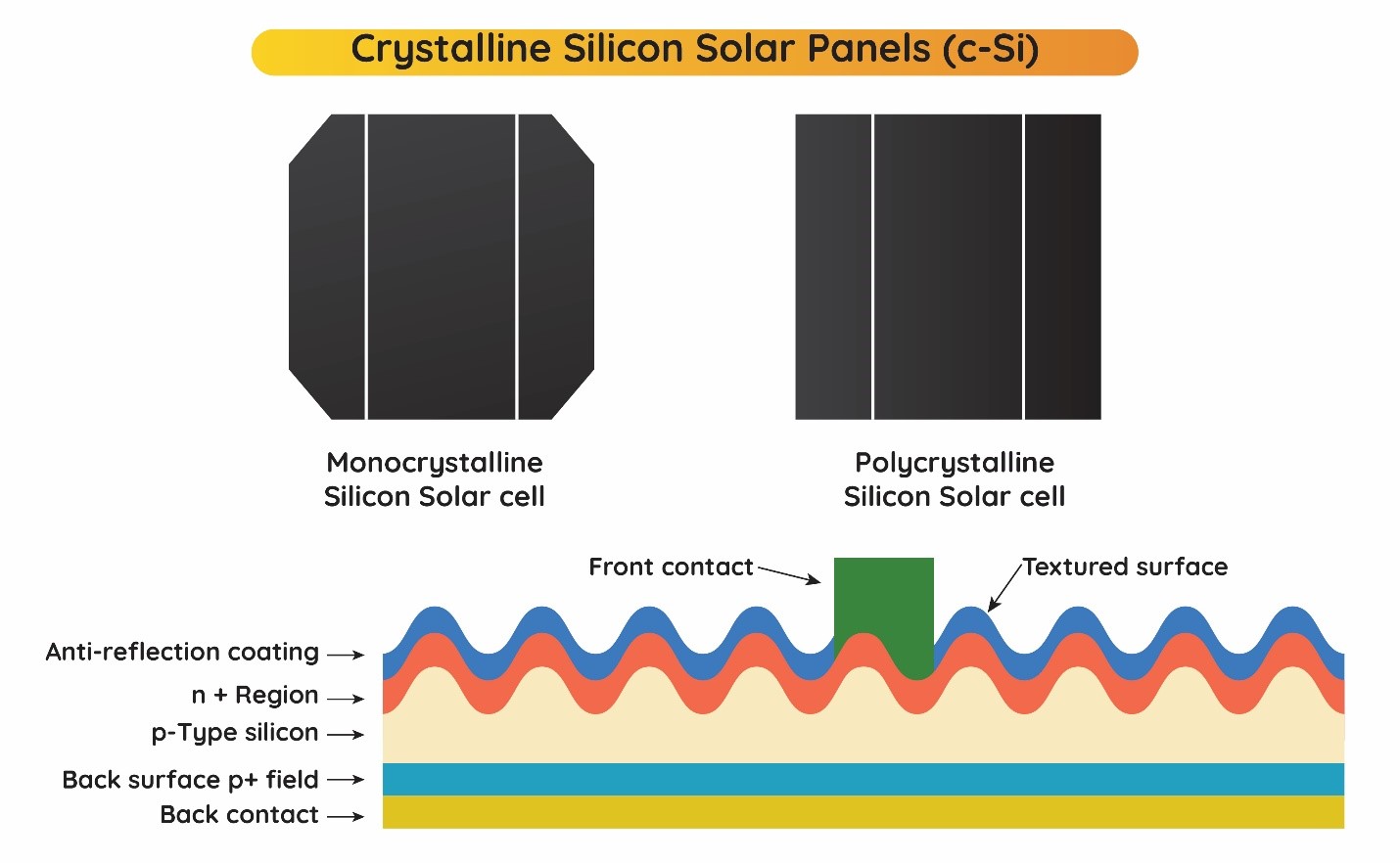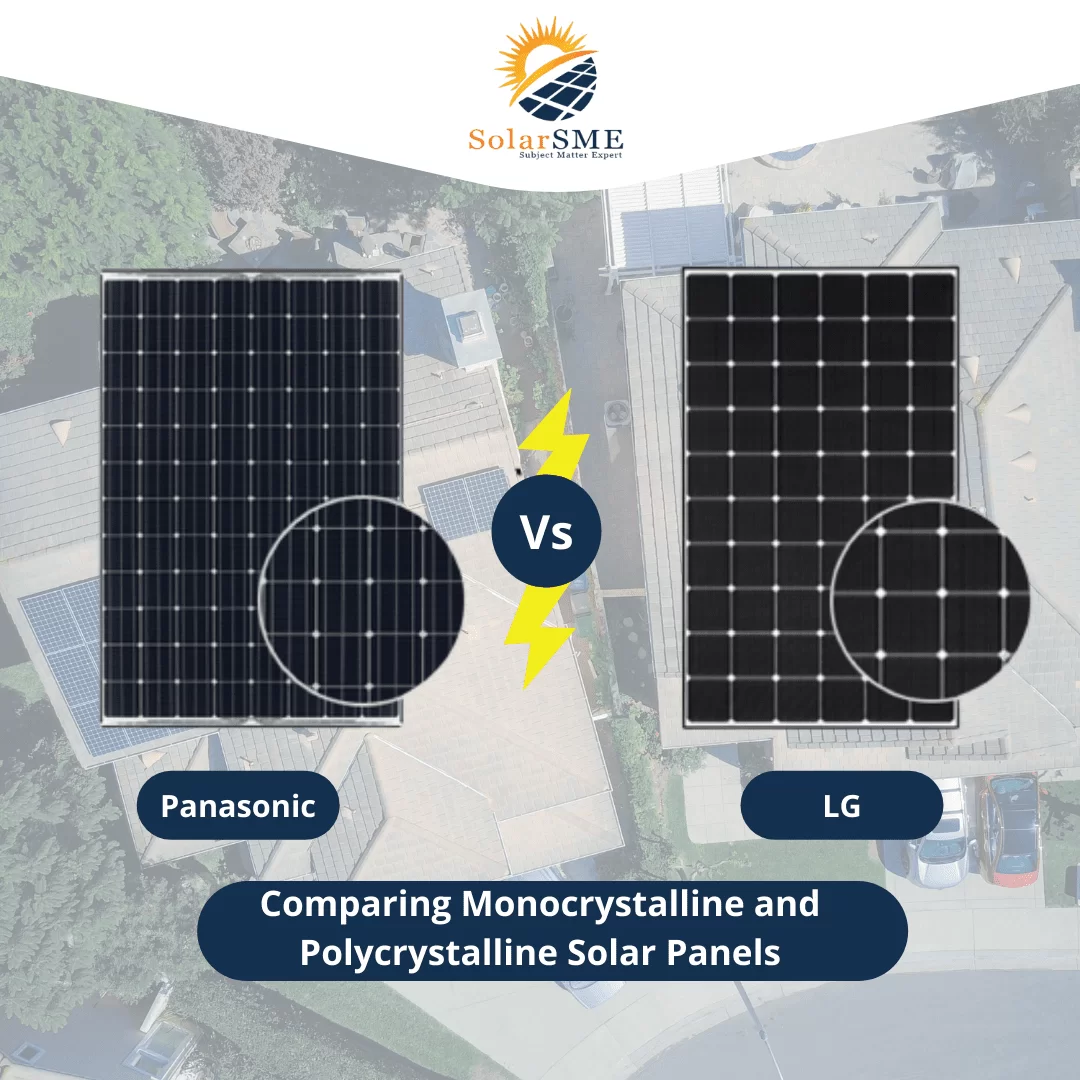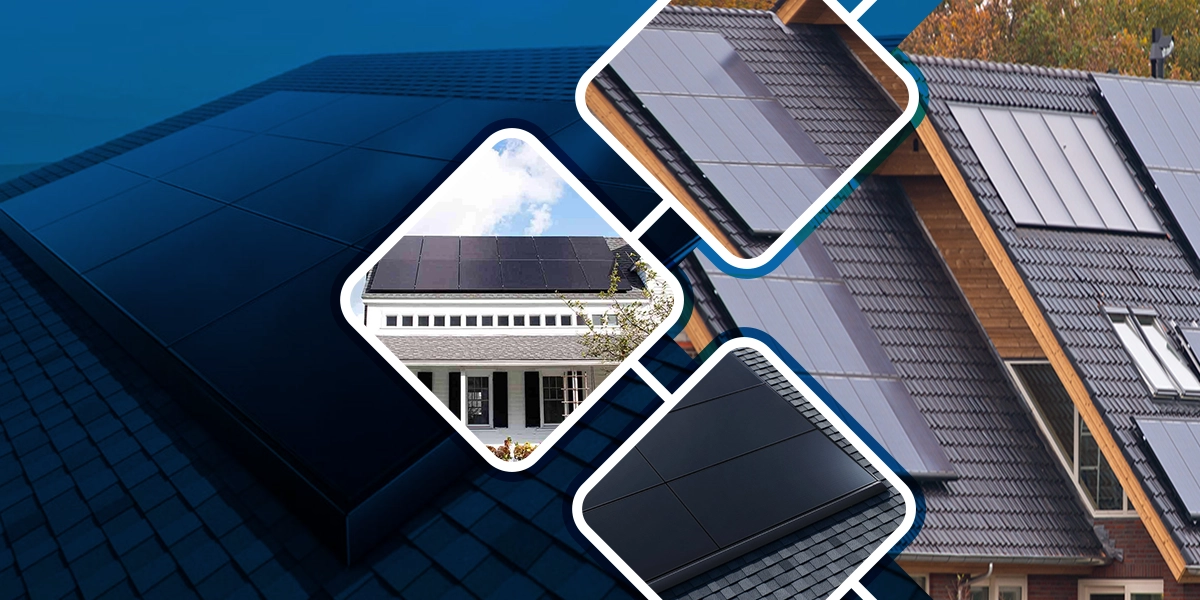- Published On:
Thin Film Vs. Crystalline Solar Panels
Solar panels turn light into electricity through the photovoltaic effect. The electricity produced depends on the material of the solar cell (such as silicon or thin film), the size of the cell (bigger means more cells, which can produce more electricity), and the quality of light that hits. The sun is the best light source because it’s readily available and free. In this article, we will delve into thin film vs crystalline solar panels and explore which panels are best for your home.

Important Points To Remember:
- Crystalline solar panels are known for their efficiency. They are considered as preferred choice for residential solar installation.
- There are two main types of c-Si solar cells: monocrystalline and poly-crystalline silicon.
- Thin-film solar cells are more cost-effective than crystalline silicon solar panels, but they are not as efficient in converting sunlight into electricity.
- Cadmium telluride (CdTe) technology is currently the most popular and widely used solar panel technology in the market.
- Keep in mind that thin film panels are not as durable and efficient as crystalline ones, so you need to install more thin film solar panels to produce the same amount of energy.
What is in this article?
-
- Characteristics of Thin Film vs Crystalline Solar Panels
- The Difference Between Thin Film and Crystalline Solar Panels
- Advantages of Thin Film vs Crystalline Solar Panels
- Disadvantages of Thin Film vs Crystalline Solar Panels
- Environmental Impacts of Thin Film vs Crystalline Solar Panels
- How to Choose the Perfect Solar System for Your Home?
Characteristics of Thin Film vs Crystalline Solar Panels:
Crystalline Solar Panels:
Each case cell can generate about 0.5 volts of electricity. To increase the output voltage, several cells can be connected in a series. This allows solar panels to generate higher voltages and produce more electricity from sunlight.
Types of Crystalline Silicon Solar Panels:
There are two main types of c-Si solar cells: monocrystalline and poly-crystalline silicon. Monocrystalline silicon is manufactured by a single crystal and is shaped into wafers that are 150 mm in diameter and 200 mm thick. On the other hand, multi-crystalline silicon is manufactured by cutting silicon blocks into bars and then wafers.
Monocrystalline Vs Polycrystalline Solar Panels:
Monocrystalline solar panels are better at converting sunlight into electricity and perform well even in hot temperatures. These panels have efficiency ranging from about 14% to 18%. However, they are expensive. On the other hand, polycrystalline solar panels are cheaper but have a slightly lower efficiency rate of about 12-14%. They are not as efficient as monocrystalline panels but are more cost-effective. So, it depends on the customer need that they either want affordable polycrystalline panels or efficient monocrystalline solar panels.

Where Can You Install Crystalline Solar Panels?
Crystalline solar panels are widely used for homes and businesses because of the efficiency of these panels. In homes, they generate electrical power to meet the power need of your household, and in commercial settings, they provide energy for factories and offices. These panels are also used in concentrated solar power plants to convert sunlight into electricity. Additionally, these panels can also be used to power food trucks, electric vehicles, and satellites in space, etc.
Thin Film Solar Panels:
Thin-film solar cells are more cost-effective than crystalline silicon solar panels, but they are not as efficient in converting sunlight into electricity. They typically convert about 20% to 30% of the light into electrical power.
There are four main types of thin-film solar panels based on the materials used:
- Amorphous silicon (a-Si) and thin-film silicon (TF-Si).
- Cadmium telluride (CdTe).
- Copper indium gallium deselenide (CIS or CIGS).
- Dye-sensitized solar cells (DSC) with other organic materials.
These solar cells are made up of approximately six layers. Firstly, there is a transparent coating to reduce reflections. Then, there are P-type and N-type layers, which help create an electrical field to generate electricity. After that, there is a contact plate and a substrate that support the cell’s structure.
Like crystalline silicon solar cells, thin-film solar cells work on the photovoltaic principle. Though they are not as efficient as crystalline silicon solar panels but thin film solar panels are cost-effective to manufacture.
Types of Thin Film Solar Panels That are Available in the Solar Market:
Amorphous silicon (a-Si) and thin-film silicon (TF-Si):
Amorphous Silicon (a-Si) is the type of photovoltaic panel that is more efficient than CdTe, but it is mostly used in smaller electronic devices rather than large-scale projects. These panels have an efficiency range of 5.9% to 9%, but in some cases, they can reach as high as 13.8%.
Cadmium Telluride (CdTe):
Cadmium telluride (CdTe) is currently the most popular and widely used solar panel in the market. These panels are affordable and easy to install. The best-reported efficiency of CdTe solar cells is 17.3%.
Perovskite thin Film Solar Panels:
This single-crystal cell can be stacked with other thin film photovoltaic cells to capture sunlight. These cells are helpful in the manufacturing process of tandem solar cells. The tandem solar cells have achieved a record-breaking efficiency level of about 29%, which is significantly higher than the individual perovskite cells (25.7%) and silicon cells (26.7%).
The Difference Between Thin Film and Crystalline Solar Panels:
In the solar industry, crystalline solar modules (both monocrystalline and polycrystalline) are the most common, making up a significant portion of global solar installations. Thin film modules, on the other hand, only account for about 5% of solar installations worldwide. Although thin film technology is cheaper than crystalline modules, the price difference is narrowing as crystalline silicon module prices decrease over time.
Moreover, thin film modules use a rare metal called tellurium, which allows them to absorb solar rays more effectively than crystalline silicon modules, contributing to their lower cost. However, tellurium is toxic and not easy to find, posing challenges for thin film technology. In contrast, silicon-based technology produces only minimal carbon emissions during the manufacturing process, making it more eco-friendly.
Cost of Thin Film Vs. Crystalline Solar Panels:
Crystalline solar panels are more costly because they are very efficient and long-lasting. On the other hand, thin-film solar panels are cheaper because they are not as efficient. However, the initial setup cost is lower because they require fewer materials during installation.
If you want to save money in the long run, installing thin-film solar panels is a good option. The payback period of these panels is short as compared to crystalline panels, meaning you’ll start seeing a return on your investment sooner. Keep in mind that thin film panels are not as durable and efficient as crystalline ones, so you need to install more thin film solar panels to produce the same amount of energy.
The Efficiency Comparison of Thin Film Vs Crystalline Solar Panels:
With over 20% efficiency rating, crystalline silicon solar panels are better at converting sunlight into electricity. They can work effectively in various weather conditions because they can absorb light from a wide range of the sunlight spectrum.
On the other hand, thin-film solar panels usually have a lower efficiency, around 10% to 12%. However, they can absorb light from a broader spectrum, even capturing ultraviolet and infrared light. This makes them more efficient in low-light situations like sunrise, sunset, and cloudy days.
Installation of Thin Film Vs Crystalline Solar Panels:
Setting up both crystalline silicon and thin-film solar panels requires hardware and mounting brackets. You will also need to connect an inverter to the grid and need wiring between the inverter and the panels.
However, the installation of thin-film solar panels is usually quicker and simpler as compared to crystalline silicon panels. This is due to the fact that thin-film panels are lighter, more flexible, and easier to handle. Their slim design means you won’t require as many mounting brackets or as much labor during installation.
On the other hand, thin-film solar panels usually have a lower efficiency, around 10% to 12%. However, they can absorb light from a broader spectrum, even capturing ultraviolet and infrared light. This makes them more efficient in low-light situations like sunrise, sunset, and cloudy days.

Advantages of Thin Film Vs Crystalline Solar Panels:
Monocrystalline and polycrystalline solar panels have significant advantages over thin-film cells. These panels are durable, last for more than 30 years, and have high efficiency of 20% (compared to thin film’s 10%). Crystalline silicon panels are more cost-efficient to manufacture than thin film technology.
Crystalline solar panels outshine thin film panels in terms of price as well. They are more affordable and efficient, making them suitable for various applications in commercial, industrial, and residential settings at a lower cost. Additionally, the durability of crystalline silicon panels makes them ideal for extreme temperatures, as they only lose around 1% of power output each year.
In contrast, thin-film solar panels are cheaper than crystalline silicon panels and can be manufactured by thin silicon wafers, making them more flexible and easier to handle. They are also less susceptible to damage from external shocks as compared to crystalline silicon.
Disadvantages of Thin Film vs. Crystalline Solar Panels:
Disadvantages of Crystalline Silicon Solar panels:
Crystalline silicon solar panels have some drawbacks. They are more expensive than other types of solar panels. Additionally, they have a lower solar energy absorption rate, and the material is brittle and fragile.
Disadvantages of Thin Film Solar Panels:
Thin-film solar cells’ efficiency is lower, which means they may not be as effective in certain weather conditions. Their structure is also more complex, and installing flexible thin-film panels requires specific skills, making them unsuitable for use in aerospace applications.
Environmental Impacts of Thin Film vs Crystalline Solar Panels:
Thin film solar panels contain cadmium, which is a harmful substance that can cause cancer and poses risks to people’s health. Proper recycling and disposal of cadmium is challenging. However, there is a positive aspect to consider: despite emitting pollutants and toxic substances during their manufacturing, the overall life cycle emissions of thin-film CdTe panels are low. For instance, they produce approximately 14 grams of CO2 per kilowatt-hour (kWh) of electricity, which is significantly lower than electricity sources like coal (1,001 grams of CO2e/kWh).
Regarding sustainability, most photovoltaic cells, both crystalline and thin film, are more eco-friendly than non-renewable energy sources like coal. They consume less water on average to generate electricity, using about 26 gallons per megawatt-hour (MWh) as compared to coal’s consumption of 687 gallons per MWh.
How to Choose the Perfect Solar System for Your Household?
When looking for solar systems, there are different types of panels to choose from in solar market like polycrystalline, monocrystalline, and thin film. To make the right decision, consider the following factors:
Final Thoughts:
When choosing between thin film vs crystalline solar panels, it is essential to consider multiple factors to ensure the best fit for your home needs. Crystalline silicon panels offer high efficiency and durability but a higher initial cost. On the other hand, thin-film solar cells are more affordable, flexible, and less prone to damage. However, they have lower efficiency and a more complex structure. Both options have their advantages and disadvantages, and the decision should be based on individual household requirements, budget, and long-term energy goals. By carefully weighing factors such as cost, efficiency, durability, maintenance, certifications, and project specifications, one can choose the best option to harness the power of solar energy effectively and sustainably.
Related Articles:
Many solar brands in the market, making it a daunting task to choose the top-rated solar panels for home.
LG & Panasonic, both market leaders are the best solar panel brands in the solar energy industry. The two competitors are globally recognized as sellers of high-efficiency and top-quality best solar panels for your home.
If you are searching for a budget-friendly and sleek rooftop energy system, Tesla solar panels are a good option. However, their efficiency rating is within the average range. So, if you live in a sunny state, you can choose them for aesthetics and cost-effectiveness. Explore the specifications and costs of Tesla solar panels. Also, we will compare them with other brands to help you decide about these panels.



